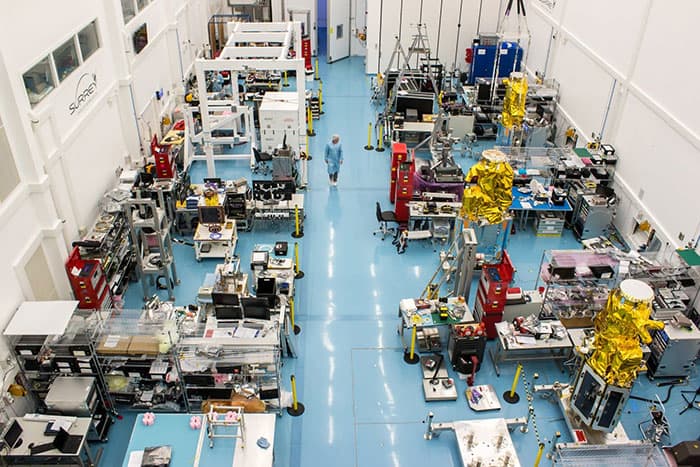Flash Physics is our daily pick of the latest need-to-know developments from the global physics community selected by Physics World‘s team of editors and reporters

A distant dead galaxy mystifies astronomers
A distant dead galaxy observed by NASA’s Hubble Space Telescope has astronomers questioning their understanding of how massive galaxies form and evolve. Until now, it was assumed that dead galaxies – those that no longer produce stars – in the early universe are elliptical and maintain that shape as they evolve. Meanwhile, disc-shaped, spiral galaxies usually contain young stars and undergo star formation. But, galaxy MACS 2129-1 calls this theory into question. MACS 2129-1 is a fast-spinning, disc-shaped galaxy three times as massive as the Milky Way but half the size, and it stopped forming stars a few billion years after the Big Bang. The finding surprised Sune Toft from the University of Copenhagen in Denmark and colleagues, as it indicated that some of the earliest dead galaxies must somehow evolve from Milky Way-like discs to giant elliptical galaxies, changing not just their structure, but also the motion of their stars. Toft suggests this probably happens through mergers. “If these galaxies grow through merging with minor companions, and these minor companions come in large numbers and from all sorts of different angles onto the galaxy, this would eventually randomize the orbits of stars in the galaxies,” explains Toft. “You could also imagine major mergers. This would definitely also destroy the ordered motion of the stars.” The study is presented in Nature and the researchers hope that the upcoming James Webb Space Telescope will provide further insights.
Physicists rupture a photon dam
The optical equivalent of water surging through a ruptured dam has been created by physicists in France and Italy. When intense light travels through a medium such as an optical fibre, the light can modify the optical properties of the medium. This can create an effective interaction between photons in the fibre, causing them to behave like molecules in a fluid. Now, Gang Xu and colleagues at the University of Lille and Stefano Trillo at the University of Ferrara have used this effect to mimic what happens when a dam suddenly breaks and water is allowed to flow freely through the breach – a well-studied phenomenon in fluid mechanics. Their experiment begins with a continuous wave of laser light flowing through a fibre, which represents the flow over the dam before it breaks. The team then increases the laser power sharply in about 25 ps to simulate the surge of water that occurs after a dam is burst. Careful monitoring of the light emerging from the fibre reveals characteristic shock waves, which are also seen in dam breaks. If the jump in power is above a certain threshold, the troughs in the shockwaves are so low that they contain no light at all – something that is not seen in water-dam breaks. Writing in Physical Review Letters, the team says that its set-up could be used to study other fluid-like behaviours of light including the emergence of rogue waves.
UK government unveils Space Industry Bill

The UK government will introduce a Space Industry Bill in the current session of parliament. The Conservative government says that the purpose of the bill is to “boost the economy, British business, engineering and science by making the UK the most attractive place in Europe for commercial spaceflight”. A key aim of the bill is to allow space missions to be launched from UK soil. This is not currently possible because the country has no regulatory framework that covers operational insurance, indemnity and liability associated with spaceflight. The bill proposes new government powers to license and regulate commercial spaceflight including rockets, spaceplanes, satellites and spaceports. New security powers to protect spaceflight from unauthorized access and interference are also included in the bill. The UK space industry has enjoyed 8% annual growth over the past decade and is currently worth about £13.7 billion – much of that coming from the production of small satellites. Today, British companies have about 6.5% of the global space market and the government hopes to boost this to 10% by 2030.



